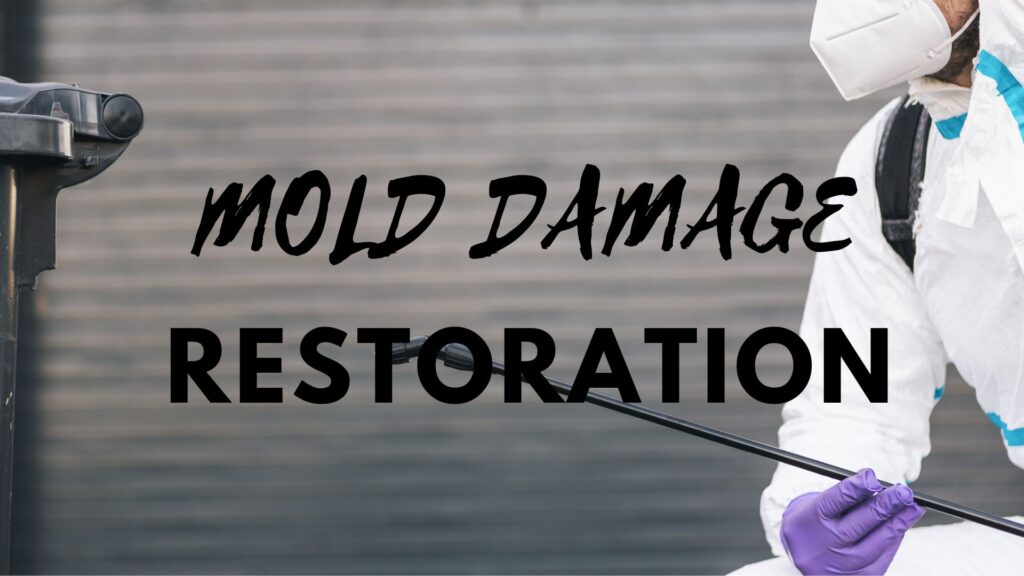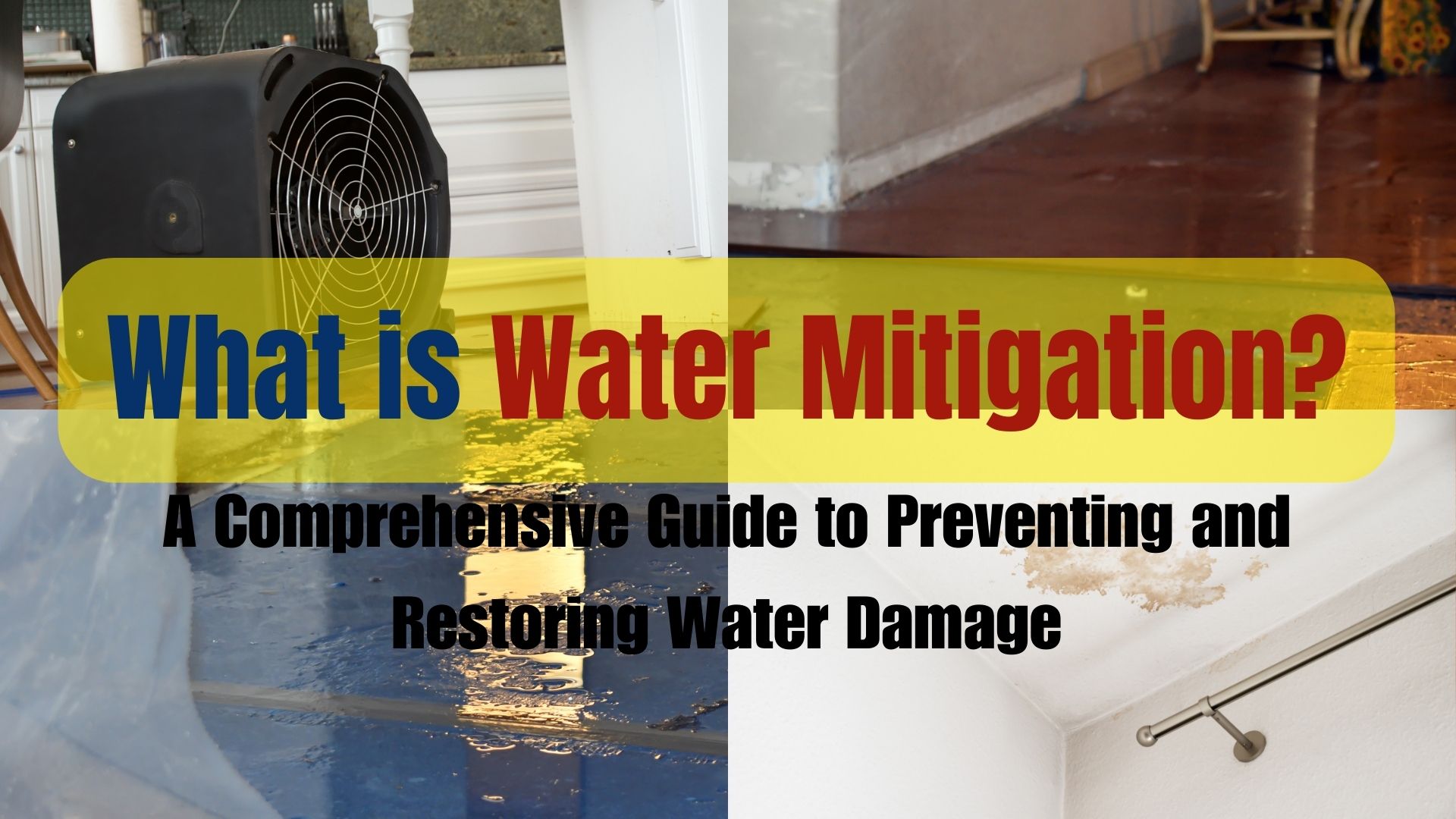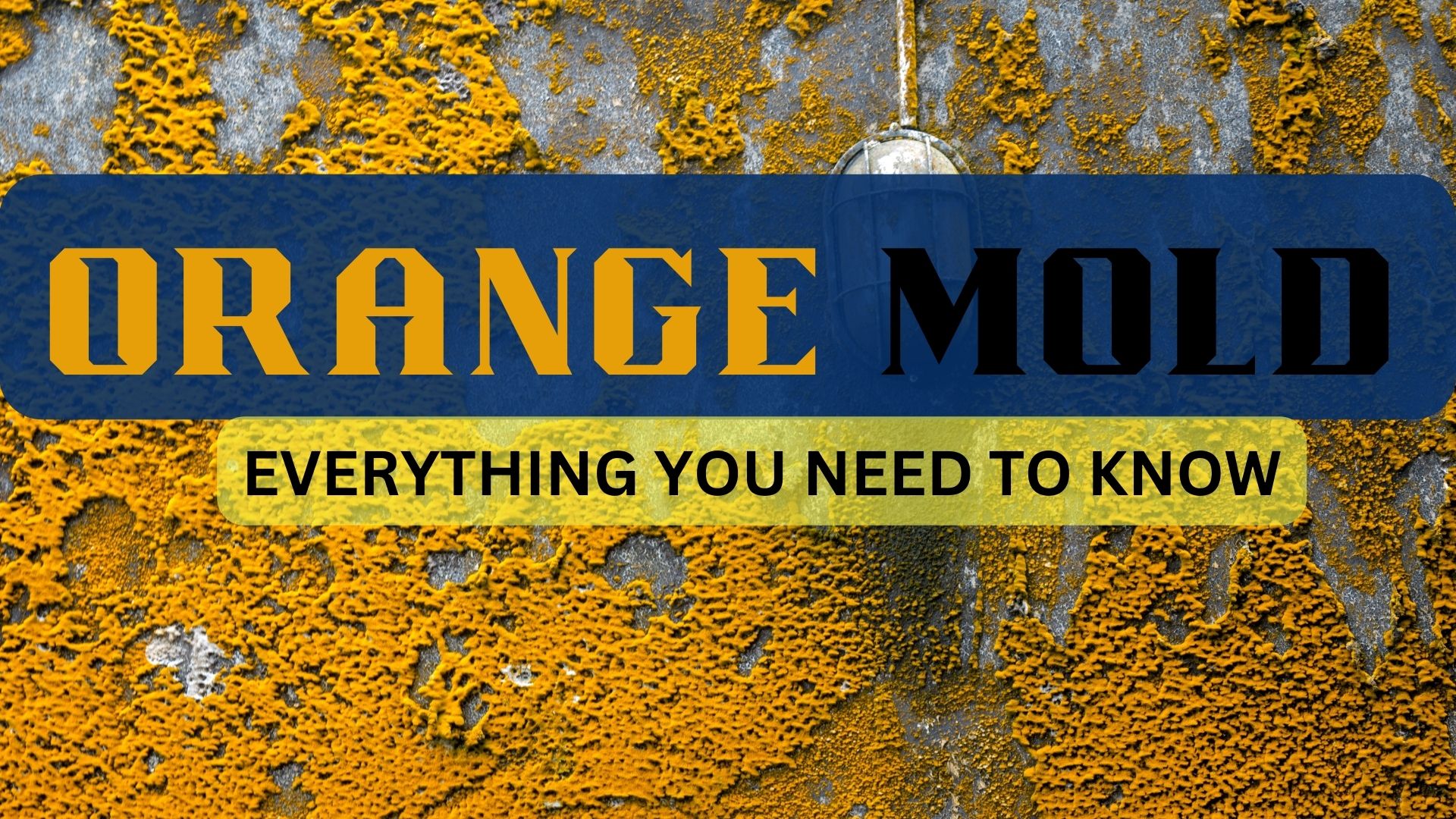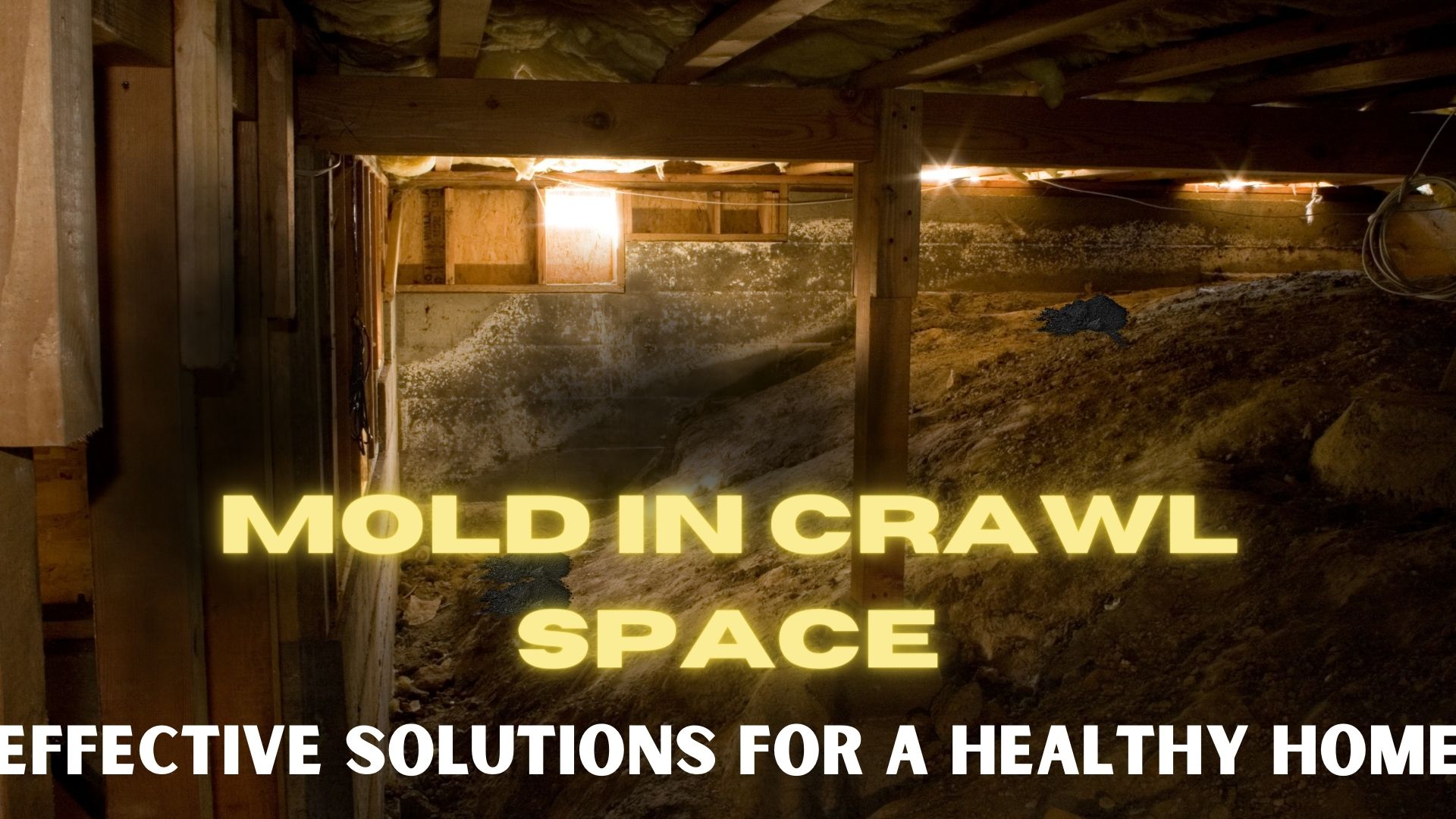Got mold in crawl space? Hidden beneath your home, tucked away from sight, a dark and damp world exists—your crawl space. While often neglected, this space plays a crucial role in the overall health and stability of your home. Unfortunately, it is also a prime breeding ground for a silent intruder that can wreak havoc on your property and your well-being: mold.
Imagine the insidious growth of mold, silently creeping its way through your crawl space, releasing invisible spores that infiltrate the air you breathe. Its presence may go unnoticed for months or even years until musty odors permeate your home and you discover unsightly patches of mold-staining surfaces.
But fear not! In this definitive guide, we unveil the secrets to rid your crawl space of this insidious intruder once and for all. From identifying the types of mold that can plague your crawl space to implementing effective mold remediation techniques, we will empower you with the knowledge and tools needed to combat this hidden menace.
Prepare to embark on a journey of discovery as we explore the importance of vapor barriers, delve into the world of mold remediation, and equip you with preventive measures to ensure a mold-free crawl space. Together, we will banish mold, protect your home’s structural integrity, and safeguard the health and well-being of your loved ones.
Are you ready to take control of your crawl space, eliminate mold problems, and reclaim a healthy living environment? Let’s dive deep into the world of mold in crawl spaces and discover the transformative solutions that await you.
Understanding the Importance of Dealing with Mold in Crawl Space
Mold in crawl spaces can be a significant concern for homeowners. Crawl spaces provide the perfect environment for mold to thrive due to poor ventilation, high humidity levels, and potential water intrusion. If left unaddressed, crawl space mold can lead to various health problems, structural damage, and musty odors that can permeate throughout the home. In this comprehensive guide, we will explore effective methods to get rid of mold in crawl spaces and prevent its recurrence. Thus, ensuring a healthier living environment for you and your family.
Identifying and Assessing Mold in Crawl Space Issues
Before embarking on mold remediation in your crawl space, it is essential to identify and assess the extent of the problem. Here are some crucial steps to follow:
Finding Mold: Start by conducting a thorough inspection of your crawl space. Look for visible signs of mold growth, such as black or white patches on surfaces, musty smells, or discoloration.
Types of Mold: Familiarize yourself with different types of mold that are commonly found in crawl spaces. Black mold, known as Stachybotrys chartarum, is a particularly toxic variety that requires immediate attention. Other common molds include white mold, Aspergillus, Penicillium, and Cladosporium.
Assessing Mold Growth: Determine the extent of mold growth in your crawl space. Check if the mold is localized or widespread, and identify any potential causes such as water leaks, condensation, or inadequate insulation.
Taking Preventive Measures to Control Crawl Space Mold
To prevent mold in crawl spaces, it is crucial to address underlying issues and implement preventive measures. Consider the following steps:
Vapor Barrier Installation: Install a vapor barrier, such as a thick plastic sheet, to prevent moisture from seeping into the crawl space. This barrier helps to create a moisture barrier between the ground and the crawl space, reducing the risk of mold growth.
Proper Ventilation: Ensure your crawl space has adequate ventilation to allow for air circulation and moisture control. Install vents or fans to promote airflow and prevent the buildup of dampness.
Addressing Water Issues: Identify and fix any water-related problems in the crawl space, such as leaking pipes, water intrusion from outside, or inadequate drainage. Consider installing a sump pump to remove excess water and maintain a dry environment.
Insulation and Dehumidification: Insulate your crawl space walls and floor joists to reduce temperature fluctuations and condensation. Additionally, using a dehumidifier can help maintain optimal humidity levels, discouraging mold growth.
Mold Remediation in Crawl Spaces: Step-by-Step Guide
If you discover mold in crawl spaces, prompt action is necessary to ensure effective mold removal. Follow these steps for mold remediation:
- Safety Precautions:
Before starting the remediation process, ensure you have proper protective gear, including gloves, goggles, and a respirator, to avoid exposure to mold spores.
- Containment Measures:
Seal off the crawl space area to prevent mold spores from spreading to other parts of the house. Create a barrier by using plastic sheeting and duct tape.
- Remove the Mold:
Carefully remove mold-infested materials, such as insulation, cardboard, or other porous items. Place them in sealed trash bags to prevent cross-contamination. Scrub hard surfaces with a mold-killing solution and a brush.
- HEPA Vacuuming:
Thoroughly vacuum the crawl space using a HEPA-filtered vacuum cleaner to remove any remaining mold spores.
- Drying and Disinfection:
After mold removal, ensure the crawl space is adequately dried using fans or dehumidifiers. Apply an antimicrobial solution to inhibit mold regrowth.
- Repair and Restoration:
Replace damaged insulation, repair any leaks or cracks, and ensure proper drainage to prevent future mold problems.
Maintaining a Mold-Free Crawl Space for the Long Term
- Once you have successfully removed mold in your crawl space, it is crucial to implement preventive measures to maintain a mold-free environment:
- Regular Inspections: Schedule periodic inspections of your crawl space to identify any signs of moisture, leaks, or mold growth. Early detection can help prevent mold problems from escalating.
- Monitor Humidity Levels: Use a hygrometer to monitor humidity levels in your crawl space regularly. Keep humidity levels below 60% to discourage mold growth.
- Addressing Water Intrusion: Promptly address any water intrusions issues, such as leaks or flooding, to prevent moisture buildup in the crawl space.
- Proper Ventilation: Maintain proper airflow and ventilation in the crawl space to promote drying and prevent stagnant, humid conditions.
- Professional Assistance: Consider hiring a professional mold remediation service for comprehensive inspections and maintenance, especially if you have recurring mold problems or extensive mold growth.
Understanding the Health Risks Associated with Crawl Space Mold
Mold growth in crawl spaces not only poses structural concerns but also poses health risks to individuals living in the affected homes. It is important to be aware of the potential health problems associated with mold exposure.
Here are some common health issues linked to mold in crawl spaces:
Respiratory Problems: Mold spores can trigger respiratory problems, especially in individuals with allergies or asthma. Exposure to mold spores can lead to coughing, wheezing, chest tightness, nasal congestion, and throat irritation.
Allergic Reactions: Some people may develop allergic reactions to mold spores, resulting in symptoms such as sneezing, itchy or watery eyes, skin rashes, and hives.
Irritation and Inflammation: Prolonged exposure to mold can cause irritation and inflammation of the mucous membranes, leading to sinusitis, throat irritation, and persistent coughing.
Headaches and Fatigue: Mold exposure has been associated with headaches, fatigue, difficulty concentrating, and overall decreased cognitive function.
Increased Asthma Symptoms: Individuals with asthma may experience worsened symptoms when exposed to mold, including increased frequency and severity of asthma attacks.
Toxic Mold: Certain types of mold, such as black mold (Stachybotrys chartarum), produce mycotoxins that can have toxic effects on human health. Prolonged exposure to these toxins can lead to more severe respiratory problems, neurological issues, and immune system suppression.
It is important to note that the severity of health problems may vary depending on an individual’s sensitivity to mold and the duration and intensity of exposure. Therefore, it is crucial to address crawl space mold promptly to protect the health and well-being of household occupants.
Effective Methods for Crawl Space Mold Removal
When dealing with mold in crawl spaces, it is essential to choose appropriate methods for effective removal. Here are some effective techniques to consider:
- Physical Removal:
Begin by physically removing mold-infested materials, such as damaged insulation, cardboard boxes, or other porous items. Seal them in plastic bags before disposing of them to prevent further contamination.
- Surface Cleaning:
Scrub hard surfaces, including walls, floors, and support beams, with a mold-killing solution such as a mixture of water and detergent, baking soda, vinegar, hydrogen peroxide, or a commercial mold cleaner. Ensure thorough cleaning and disinfection to eliminate any remaining mold spores.
- HEPA Vacuuming:
Use a high-efficiency particulate air (HEPA) vacuum cleaner to remove loose mold spores from surfaces and the air. HEPA filters are effective in trapping tiny particles, including mold spores, preventing them from being released back into the air.
- Professional Mold Remediation:
For extensive mold growth or recurring mold problems, it is advisable to seek professional assistance. Certified mold remediation specialists have the expertise, equipment, and experience to handle complex mold situations safely and effectively.
- Encapsulation:
Consider encapsulating the crawl space walls and floor joists with specialized mold-resistant products. Encapsulation helps create a barrier against moisture and mold, reducing the risk of future mold growth.
Preventing Mold Recurrence in Crawl Spaces
To ensure the long-term prevention of mold in crawl spaces, it is important to implement preventive measures and maintain a healthy environment. Here are additional strategies to consider:
Proper Drainage: Ensure proper grading around your home’s foundation to prevent water from pooling near the crawl space. Consider installing gutters, downspouts, and proper drainage systems to divert water away from the foundation.
Regular Inspections: Conduct routine inspections of your crawl space to identify any signs of water intrusion, leaks, or mold growth. Promptly address any issues to prevent mold from spreading and causing further damage.
Monitor Humidity Levels: Use a hygrometer to monitor humidity levels in your crawl space regularly. Aim for humidity levels below 60% to discourage mold growth. If humidity levels are consistently high, consider using a dehumidifier.
Air Circulation and Ventilation: Ensure proper air circulation and ventilation in the crawl space. Install vents or fans to promote airflow and reduce moisture buildup. Keep crawl space access doors and vents open whenever possible.
Regular Cleaning: Periodically clean the crawl space to remove dust, debris, and potential mold spores. Vacuum or sweep the area and consider using a mold-inhibiting spray or solution for added protection.
Educate Yourself: Stay informed about mold prevention and maintenance practices for crawl spaces. Continually educate yourself about potential risks, new technologies, and best practices to ensure a mold-free environment.
By implementing these preventive measures and maintaining a proactive approach, you can significantly reduce the risk of mold recurrence in your crawl space, promoting a healthier living environment.
Hiring Mold Experts to Get Rid of Mold in Crawl Spaces
Mold in crawl spaces can pose serious health risks and structural concerns. By following the steps outlined in this guide, you can effectively get rid of mold in your crawl space and prevent its recurrence. Prioritize the well-being of your home and family by taking proactive measures against crawl space mold.
Superior Restoration and Shamrock Cleaning is a trusted partner for homeowners seeking professional assistance in getting rid of mold in crawl spaces and other affected areas. With their expertise in mold remediation, they offer comprehensive solutions to address crawl space mold problems effectively. Their team of certified technicians utilizes advanced techniques and equipment to identify and remove mold, ensuring a thorough and safe process.
By combining their in-depth knowledge, years of experience, and a commitment to customer satisfaction, Superior Restoration provides homeowners with peace of mind, a healthier living environment, and a restored crawl space free from the grip of mold.
Get in touch with our mold experts, Water Damage Rancho Cucamonga, today!






